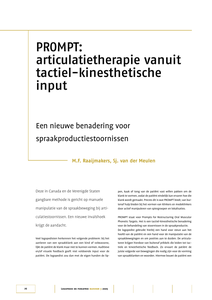Understanding taste is key for optimizing the palatability of seaweeds and other non-animal-based foods rich in protein. The lingual papillae in the mouth hold taste buds with taste receptors for the five gustatory taste qualities. Each taste bud contains three distinct cell types, of which Type II cells carry various G protein-coupled receptors that can detect sweet, bitter, or umami tastants, while type III cells detect sour, and likely salty stimuli. Upon ligand binding, receptor-linked intracellular heterotrimeric G proteins initiate a cascade of downstream events which activate the afferent nerve fibers for taste perception in the brain. The taste of amino acids depends on the hydrophobicity, size, charge, isoelectric point, chirality of the alpha carbon, and the functional groups on their side chains. The principal umami ingredient monosodium l-glutamate, broadly known as MSG, loses umami taste upon acetylation, esterification, or methylation, but is able to form flat configurations that bind well to the umami taste receptor. Ribonucleotides such as guanosine monophosphate and inosine monophosphate strongly enhance umami taste when l-glutamate is present. Ribonucleotides bind to the outer section of the venus flytrap domain of the receptor dimer and stabilize the closed conformation. Concentrations of glutamate, aspartate, arginate, and other compounds in food products may enhance saltiness and overall flavor. Umami ingredients may help to reduce the consumption of salts and fats in the general population and increase food consumption in the elderly.
MULTIFILE

PROMPT is a tactile-kinesthetic approach for assessment and treatment of speech production disorders. PROMPT uses tactile-kinethetic cues to facilitate motor speech behaviors. Therapy is structured from basic motor speech patterns with much tactile-lkinesthetic cueing, towards complex motor speech activities with less cueing. This article describes the purpose and contents of PROMPT assessment and therapy.
DOCUMENT

Het opsporen van bedwantsen blijft een intensieve bezigheid. Door methoden te ontwikkelen waarmee bedwantsen in een vroeg stadium worden gedetecteerd, kunnen veel manuren en kosten bespaard blijven. Sinds vorig jaar onderzoekt HAS Hogeschool in opdracht van het KAD of insecten ingezet kunnen worden om bedwantsen op te sporen. De resultaten van vorig jaar waren veelbelovend. Het onderzoek is voortgezet en dit jaar zijn er naast sluipwespen ook honingbijen getraind.
DOCUMENT

Publicatie bij de rede van Feike Ruurd van der Leij, uitgesproken bij de aanvaarding van de functie van lector Health & Food aan Hogeschool Inholland in Amsterdam op 11 oktober 2021
MULTIFILE

De akkerbouw staat voor grote uitdagingen. Hoe kunnen akkerbouwers ervoor zorgen dat ze voldoende voedsel produceren, de omgeving schoon houden in een landschap met natuur én dat hun inzet wordt beloond? FAB, dat betekent functionele agrobiodiversiteit, kan daarbij helpen. In deze brochure worden vragen van akkerbouwers over FAB beantwoord.
DOCUMENT

Deze leidraad is voortgekomen uit ons afstudeerproject voor de opleiding Logopedie te Hogeschool Utrecht. Aan de hand van de leidraad willen wij logopedisten in Nederland op weg helpen met het toepassen van dynamisch testen in de praktijk. Zoals de titel weergeeft is de leidraad gericht op dynamisch testen bij kinderen met spraak- en/of taalproblemen. U vindt informatie over de term dynamisch testen, de verschillende methodes en natuurlijk hoe dynamisch testen toegepast kan worden. Om u een duidelijk beeld te geven zijn er voorbeeldcasussen uitgewerkt met betrekking tot spraak- en/of taalproblemen. In deze casussen zijn bestaande taaltesten gebruikt. Hiermee hopen wij de drempel om dynamisch testen toe te passen te verlagen.
DOCUMENT

De drie politieke doodzonden van de Vlaams-nationalistische N-VA; negationisme, cultureel racisme en geschiedsvervalsing
DOCUMENT
Al een tijdje wordt geëxperimenteerd met geprint voedsel. Lizette Oudhuis, lector Food Physics bij hogeschool Van Hall Larenstein vertelt er meer over.
DOCUMENT

From Springer description: "We present the design considerations of an autonomous wireless sensor and discuss the fabrication and testing of the various components including the energy harvester, the active sensing devices and the power management and sensor interface circuits. A common materials platform, namely, nanowires, enables us to fabricate state-of-the-art components at reduced volume and show chemical sensing within the available energy budget. We demonstrate a photovoltaic mini-module made of silicon nanowire solar cells, each of 0.5 mm2 area, which delivers a power of 260 μW and an open circuit voltage of 2 V at one sun illumination. Using nanowire platforms two sensing applications are presented. Combining functionalised suspended Si nanowires with a novel microfluidic fluid delivery system, fully integrated microfluidic–sensor devices are examined as sensors for streptavidin and pH, whereas, using a microchip modified with Pd nanowires provides a power efficient and fast early hydrogen gas detection method. Finally, an ultra-low power, efficient solar energy harvesting and sensing microsystem augmented with a 6 mAh rechargeable battery allows for less than 20 μW power consumption and 425 h sensor operation even without energy harvesting."
LINK